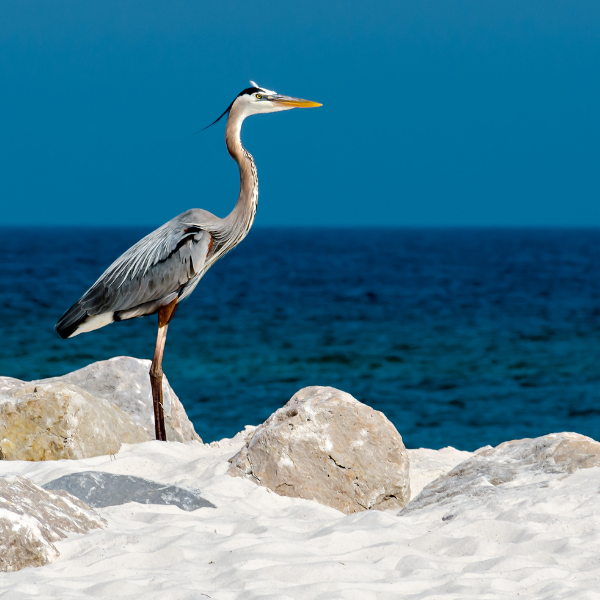
Heron – Corr Réisc
The oldest recorded bird was 23, but the average life expectancy in the wild is about 5 years. With its long neck and long legs, it is impossible to confuse with another Irish bird although some still call them cranes. The Crane became extinct in Ireland only in late medieval times, sometime between 1540 and 1600. They are most often observed alone by the banks of rivers, canals, lakes, the coast and wetlands however where feeding is good, they may congregate in relatively large numbers.
Their diet consists fish, frogs and other amphibians, ducklings, other birds, and small rodents such as mice. They’ve been known to enjoy the odd goldfish or two from garden ponds! They are clever and sometimes toss seeds or fruit in the water to attract fish.
Herons are a wading bird generally avoiding swimming whenever possible. A grey heron’s nest is made from large twigs and grass & forms a large platform in tall trees built in colonies called a heronry. Both parents incubate the eggs which are pale greenish-blue; both also feed the chicks. Herons that breed in Ireland are sedentary however birds from Britain and as far away as Scandinavia join the Irish population for the winter.
In Irish mythology both crane and heron are placed as guardians of the treasures of the Otherworld. A beauty named Aoife was turned into a crane by a jealous lover and forced to be a slave to Manannan Mac Lir, the sea god, for 200 years, “always in his house with everyone mocking thee, a crane that does not visit any land.”
When poor Aoife died, Manannan, rather gruesomely, from her skin had made “a good treasure of vessels” such as his shirt, knife &helmet. This crane-bag would reveal its contents only at full-tide, otherwise nothing was visible. The bag was passed on to various gods. Celts believed heron was an incarnation of the goddess called Rhiannon, which was a Celtic deity associated with lakes & waters.
